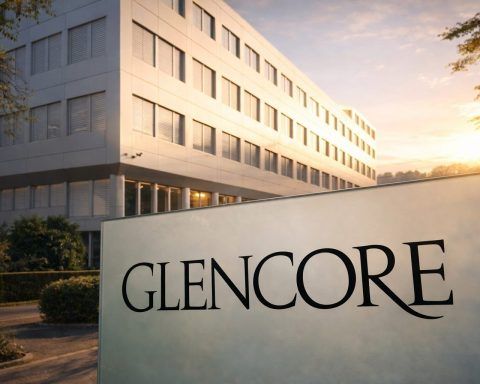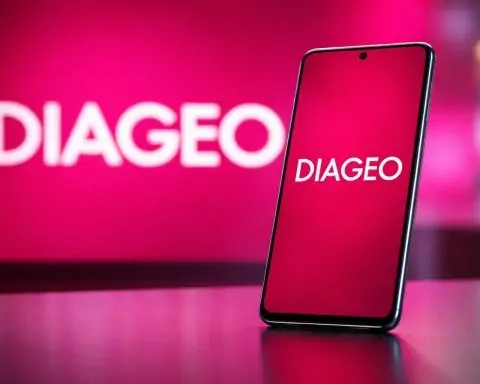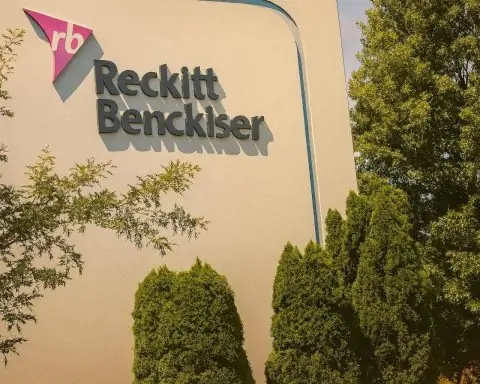- Geely’s Zeekr is rumored to be preparing a hypercar with over 2,000 horsepower, an upgrade to the Zeekr 001 FR that currently has 1,300 horsepower.
- Lucid Motors’ Air Grand Touring set a Guinness World Record for the longest electric-vehicle journey without recharging, covering about 1,205 km from St. Moritz to Munich.
- BYD will start assembling EVs in Brazil at the Bahia factory as early as July 2025, targeting 50,000 units in 2025 and up to 20,000 jobs by 2026, while navigating labor investigations.
- Intel disclosed the Diamond Rapids Xeon CPU with 192 cores per socket on the 18A process, four tiles of 48 cores each, supporting up to 768 cores in a 4-socket server and nearly 2,000 watts of power for a fully loaded system.
- AWS introduced the In-Row Heat Exchanger cooling system to cool Nvidia GPU clusters at scale, designed to slot into server racks without major modifications.
- JEDEC published the LPDDR6 standard, due to debut around 2026, promising higher bandwidth and lower voltage with new security features for mobile devices.
- Samsung unveiled Galaxy Z Fold 7 and Z Flip 7 at Galaxy Unpacked 2025 in Seoul, with Fold 7 featuring a 7.6-inch inner display and refined hinge, and the Galaxy Watch 8 gaining enhanced health sensors.
- Leaks suggest Google Pixel 10 standard price around $799 and Pixel 10 Pro around $999, with a Pixel Fold Pro benchmark hinting at a Tensor G4 chip and a fall 2025 release window.
- Meta will not further adjust its EU ‘pay or consent’ privacy model, despite potential fines and an August regulatory deadline following a €1 billion GDPR penalty.
- Morocco opened formal 5G license bids aiming for 25% population coverage by 2026 and 70% by 2030, backed by a MAD 4.4 billion investment by Maroc Telecom and Inwi.
Hypercar Hits 2,000HP, Bitcoin Breaks Records, and Hydrogen for 170,000 Years – Global Tech Roundup
July 13, 2025 – It’s been a whirlwind weekend in tech. From record-shattering electric vehicles in China and Europe to major moves in crypto policy and renewable energy breakthroughs, the past 48 hours showcased the diverse innovations and headlines redefining technology across the globe. Here are the most important and intriguing tech stories from July 12–13, 2025, spanning consumer gadgets, semiconductor advances, electric vehicles, cybersecurity, clean energy, blockchain, telecom, and more.
Electric Vehicles Race to New Extremes in Performance and Range
China’s electric car industry is pushing the performance envelope. Leaks from Chinese auto bloggers hint that Geely’s EV brand Zeekr is preparing a hypercar with over 2,000 horsepower, an unprecedented figure that would eclipse even the 1,500hp Xiaomi SU7 Ultra unveiled earlier this year [1] [2]. The rumored model – an upgraded version of Zeekr’s 001 FR, which already boasts 1,300hp – would set a new high bar for EV acceleration and track performance. Industry observers note that “the pace of progress in the Chinese EV market is staggering,” with domestic brands rapidly closing the gap with Western automakers [3]. If realized, Zeekr’s 2,000hp EV would join a very exclusive club of electric hypercars (only Rimac’s Nevera R surpasses that power today) and underscore China’s determination to lead in next-gen autos.
Meanwhile in Europe, range records are being smashed. U.S.-based Lucid Motors just drove its Air Grand Touring sedan nearly 750 miles on a single charge, clinching an official Guinness World Record for longest EV journey without recharging [4]. The marathon road trip spanned three countries – from St. Moritz, Switzerland to Munich, Germany – and beat the previous EV distance record by almost 100 miles [5]. This feat showcased the real-world capabilities of Lucid’s battery technology and efficient design, covering alpine passes, highways and backroads without a pit stop. Lucid’s record (approximately 1,205 km traveled) adds a “Game Changer” trophy to its case and highlights how luxury EVs are not just about ludicrous speed, but also exceptional endurance on the road [6]. As charging infrastructure improves, range anxiety continues to recede – and Lucid just delivered proof that long-distance EV travel is entering a new era.
Beyond individual records, the EV sector saw other notable developments. In Brazil, China’s BYD confirmed it will start assembling electric cars locally as early as this month, aiming to produce 50,000 EVs in 2025 at its new Bahia state factory [7]. The plant – a converted former Ford facility – is part of BYD’s push into Latin America’s largest auto market, and comes as tariffs on imported EVs rise. BYD’s local executive said “we should inaugurate in the coming days,” pending final regulatory approvals [8]. The company fast-tracked shipments of vehicles from China before tariffs kicked in on July 1, and will now transition to assembling knock-down kits domestically [9] [10]. Once fully operational by 2026, the complex could generate up to 20,000 jobs [11] – even as it grapples with labor investigations into construction contractors [12]. BYD’s Brazilian venture underscores how EV growth is becoming a truly global story, extending well beyond the usual U.S., European, and Chinese markets.
Chip Giants Unveil Next-Gen Processors and Cooling Tech
In semiconductor news, Intel is doubling down on monster chips to regain ground in the data center. The company revealed details of its upcoming “Diamond Rapids” Xeon CPU, slated for 2026, which will pack a staggering 192 cores per socket [13]. This next-gen processor, built on Intel’s 18A process and Panther Cove core architecture, is designed for high-end servers and AI/cloud workloads [14]. In fact, a single high-end Diamond Rapids chip will consist of four compute tiles of 48 cores each, and servers will support up to four sockets – 768 cores per machine in total [15] [16]. Such density brings immense performance but also challenges: a fully loaded 4-socket server could draw nearly 2,000W of power and require advanced cooling solutions [17]. Intel’s platform will introduce a new socket to accommodate the power and memory needs of these beastly CPUs. While the promise of 768-core servers sounds cutting-edge, some analysts wonder if 2026 might be “too little, too late” for Intel, which faces fierce competition from AMD and custom AI chips. Still, Diamond Rapids aims to keep Intel in the race for cloud and enterprise computing dominance, especially for customers looking to run AI inference on CPU clusters rather than GPUs [18] [19].
Speaking of cooling challenges, Amazon’s AWS has developed an innovative in-house solution to keep next-gen chips chilled at scale. This week AWS unveiled its custom “In-Row Heat Exchanger” (IRHX) – a proprietary liquid cooling system built to handle the heat from Nvidia’s newest GPU clusters in its data centers [20]. Dave Brown, AWS’s VP of Compute & ML, explained that Amazon rejected existing liquid cooling kits on the market because they couldn’t meet AWS’s massive scaling needs [21] [22]. “They would take up too much floor space… or increase water usage substantially,” Brown noted, saying other solutions might work for smaller installations but not for AWS-scale deployments [23]. In response, AWS engineered the IRHX to slot directly into its server racks without major modifications [24] [25]. The system wicks heat from high-power GPUs (like Nvidia’s 72-core GB200 NVL used for AI training) and expels it via liquid-to-air exchangers at the row level, all while fitting into existing rack footprints. This approach lets AWS cool supercomputer-level hardware without flooding its data halls or overhauling facilities. The company hinted it may extend the IRHX design to its homegrown Graviton CPUs in the future, as those chips’ power rises [26] [27]. The move underscores how hyperscalers are becoming hardware innovators, creating custom silicon and now custom cooling to maintain an edge. With AI servers guzzling kilowatts, data center operators are prioritizing clever thermal engineering – much like carmakers pushing engine cooling – to keep operations efficient.
On the memory front, an important industry standard just took shape. The JEDEC consortium published the spec for LPDDR6, the next generation of low-power memory destined for smartphones, ultrabooks and other mobile devices [28]. LPDDR6, expected to debut in products around 2026, promises faster speeds and smarter energy efficiency for battery-powered gadgets [29]. The standard introduces not only higher bandwidth but also new security features and lower voltage operation to extend device battery life [30]. While desktop PCs and servers won’t see LPDDR6 for a while (they rely on DDR5/DDR6), mobile and embedded devices (and even automotive and IoT) will be the first to benefit [31]. JEDEC’s announcement confirms that the memory industry continues to advance to support more demanding apps (think high-res video, advanced cameras, and even on-device AI processing) on our phones and tablets. By targeting energy efficiency alongside performance, LPDDR6 aims to meet the needs of future mobile chipsets that will have to juggle speed with strict power constraints.
Consumer Tech: Foldables, Leaks and Smart Glasses Make Headlines
It was a big week for gadget lovers, with major launches and rumors across smartphones, wearables and more. Samsung grabbed attention by officially unveiling its latest foldable phones at the Galaxy Unpacked 2025 showcase in Seoul. The new Galaxy Z Fold 7 and Z Flip 7 were introduced alongside a refreshed Galaxy Watch 8 smartwatch [32]. Samsung’s launch event confirmed incremental but welcome improvements: the Z Fold 7 features a refined hinge and brighter 7.6-inch inner display, while the pocket-sized Z Flip 7 gets an upgraded cover screen and improved durability – addressing two key asks from last year’s model. The Galaxy Watch 8 adds enhanced health sensors and better battery life. Tech reviewers noted the foldables aren’t radical departures, but Samsung continues to polish the folding formula it pioneered. With multiple form-factors now maturing, Samsung emphasized its commitment to offering “choice for different lifestyles” – whether a tablet-like Fold for power users or a compact Flip for fashion-forward consumers. Early hands-on reports have been positive, and Samsung hinted at even more exotic devices (like tri-fold tablets and rollables) in development [33] [34], although those remain R&D for now. If you missed the event, Samsung’s new foldables are already available for pre-order and will ship later this month, keeping it ahead in the growing foldable market even as rivals like Motorola and Xiaomi up their game.
Not to be outdone, Google’s next flagships are leaking out. A fresh leak suggests pricing details for the upcoming Google Pixel 10 series, expected this fall [35]. According to reports, the standard Pixel 10 might see a slight price bump (potentially starting around $799), while the Pixel 10 Pro will stick near the $999 mark – but storage options could be more limited than expected, with some “weird limitations on pairings” of colors and capacities [36]. Benchmark results also surfaced for a mysterious Pixel 10 Pro Fold, indicating Google is testing a foldable Pixel prototype [37]. If real, the Pixel Fold Pro’s scores suggest it may use a Tensor G4 chip but still lag behind Samsung’s Galaxy Z Fold 7 in raw performance [38]. Of course, Google hasn’t confirmed any of this – but Pixel enthusiasts are buzzing that a second-gen Pixel Fold (following the first model in 2024) could be in the pipeline. In the meantime, Google did officially tease the Android 14 update, emphasizing better support for large-screen and foldable devices, as well as new security features and theming options. Pixel fans should stay tuned for Google’s fall launch, where we’ll see how these rumors stack up.
Wearable tech also saw an exciting debut: Meta and Oakley have teamed up on high-tech sunglasses. The first product from this collaboration, the Oakley Meta HSTN smart glasses, went up for limited pre-order on July 11 [39] [40]. These stylish shades (pronounced “Houston”) blend Oakley’s iconic sports eyewear design with Meta’s augmented reality and audio tech – essentially Meta’s answer to Snap Spectacles or Bose Frames but with Oakley flair. The catch? Only a pricier Limited Edition model is available now, costing $499 / £499 (around AU$789) [41]. That edition features special colorways and branding. Cheaper, more standard Oakley Meta glasses are promised “later this summer” once the HSTN limited run ships on July 22 [42]. These glasses can play music, take calls, and perhaps offer heads-up notifications or simple AR overlays via built-in speakers and displays in the lenses. Early testers say they’re comfortable and the audio quality is solid, though the feature set is still fairly basic AR. It’s notable that Meta is expanding beyond VR headsets into stylish AR eyewear, reflecting CEO Mark Zuckerberg’s vision of ubiquitous smart glasses. With Apple’s pricey Vision Pro headset also making waves (in a different AR/VR category), the race is on to merge tech with fashion. Oakley Meta glasses show one approach: stealthy integration that looks “normal” at a glance. Expect more designs soon – and if you’re an Oakley fan, you can finally get a pair of glasses that talk back to you.
Other notable consumer tech tidbits: Apple is reportedly making a big play in streaming, having submitted a $150+ million per year bid for Formula 1 rights in the U.S. starting in 2026 [43]. Per Business Insider, Apple appears to be the leading bidder for F1’s streaming package, outpacing incumbent ESPN (Disney) which declined to match the sum [44]. This comes on the heels of Apple’s successful “F1: The Movie” film and its existing sports deals (like MLS soccer and MLB baseball on Apple TV+). Winning F1 streaming would cement Apple’s strategy of using live sports to bolster its TV+ platform. The bid signals that tech giants see live sports as the next battleground for streaming services – and Apple is willing to splash serious cash to secure marquee content. In the same vein, Netflix and Amazon have also shown interest in F1 rights in various regions. If Apple’s bid is confirmed, U.S. F1 fans might need an Apple TV+ subscription to watch races from 2026 onward, marking a significant shift from traditional cable. The drive to digital is full throttle, and big tech’s “sports rights arms race” is only just starting.
Cybersecurity: Arrests, Breaches and Crackdowns Span the Globe
It was a dramatic weekend in cybersecurity, with major law enforcement wins and alarming data breaches coming to light:
- International Hackers Busted: In a significant action, Italian authorities arrested a 33-year-old Chinese national wanted by the FBI for cyber-espionage [45]. The man, Zewei Xu, is accused of being part of China’s notorious Silk Typhoon (aka Hafnium) hacking group that infiltrated Western networks. U.S. officials allege Xu participated in spying campaigns targeting COVID-19 vaccine research at the University of Texas in 2020 [46] and hacked thousands of email accounts in a mass phishing operation. He was nabbed at Milan’s airport on a flight from China, after Italy cooperated with a U.S. warrant. According to interior ministry documents, Xu’s group stole sensitive data on U.S. government policies and intellectual property [47]. If extradited and convicted in the U.S., he faces decades in prison. This arrest comes as part of a broader crackdown on state-sponsored hackers – just last week the FBI offered $10 million for info on another Chinese hacking unit [48]. It sends a strong message that cybercriminals operating on an international scale are increasingly being tracked down and brought to justice, even if they attempt to hide behind borders.
- Massive Data Breach at Qantas:Qantas Airways revealed a data breach affecting 5.7 million customers, making it one of the largest corporate breaches in Australian history [49]. The airline confirmed that a “cyber incident” compromised personal information in early July, including customer names, contact details, frequent flyer numbers, and in some cases travel itineraries. Qantas says there’s no evidence financial details or passwords were stolen, but the sheer scale – nearly 6 million people – raises serious concerns. Australia’s government has been on high alert after a string of megabreaches (like Optus and Medibank last year), and could impose hefty penalties if Qantas is found negligent. The breach also prompted Qantas to bolster its security measures and offer free credit monitoring to affected flyers. Cybersecurity experts warn that the stolen data could be used in targeted phishing scams or identity theft. This Qantas incident underscores a sobering trend: no sector is immune to cyberattack, and even companies entrusted with sensitive travel data need to continuously up their defenses.
- Fake VPN Malware and Hosting Crackdown: New reports detailed how cybercriminals have been distributing malware under the guise of free VPN software on developer platforms like GitHub [50]. Security researchers found that a supposed “free VPN” tool was in fact spyware that, once installed, steals browser cookies, social media credentials, and even banking logins. The scheme relied on the trust in GitHub as a source for open-source software – a reminder that users should be cautious even when downloading from known repositories. In a related vein, the U.S. Department of Justice announced a crackdown on a “bulletproof” web hosting provider that had been knowingly servicing cybercrime gangs [51]. So-called bulletproof hosts advertise lax enforcement of abuse complaints, making them havens for ransomware groups, phishing kits, and illicit marketplaces. U.S. authorities seized servers and domains of one such hosting outfit, accusing it of enabling a significant portion of global malware operations. By taking down these enablers, law enforcement hopes to disrupt criminals’ infrastructure, not just arrest individuals. It’s an escalating game of whack-a-mole, but every takedown forces threat actors to spend time and money rebuilding their networks.
- Other Cyber Updates: British police made progress in a recent wave of retail cyberattacks, arresting four individuals tied to ransomware hits on major UK store chains including Marks & Spencer, Co-op, and Harrods [52]. Authorities haven’t released names, but the arrests suggest an organized group was behind the attacks that had disrupted operations last month. Meanwhile, chipmaker AMD issued a warning about a newly discovered side-channel vulnerability in its processors, akin to the Spectre/Meltdown flaws that haunted CPU makers in 2018. The company said the exploit (dubbed “Zenbleed” by researchers) could potentially allow attackers to steal data from high-end EPYC and Ryzen chips [53] [54]. AMD is rushing to release firmware patches and urged customers to update systems promptly. And in the “patch now” department, Citrix administrators are scrambling: a dangerous exploit called CitrixBleed 2 was found actively hitting unpatched Citrix Netscaler gateways [55] [56]. The bug can allow remote takeover of corporate networks, so IT teams are deploying fixes released earlier in the week. All told, it’s been a busy few days on the cyber front – with a clear theme that vigilance is key, whether you’re a multinational airline or an everyday internet user.
Crypto and Web3: Bitcoin’s New High and a $100M Blockchain Bet
Cryptocurrency markets are roaring back to life on the heels of anticipated regulatory breakthroughs. The price of Bitcoin hit an all-time high this week, surging past $117,000 per coin [57]. The world’s largest crypto is up 41% over the past three months [58], and its year-to-date gains now stand at about 26%. What’s fueling this bull run? Investors are “betting that a slew of long-sought policy wins” is on the horizon in Washington [59]. Starting Monday, the U.S. Congress begins a “crypto week” of debates on landmark bills that could finally provide regulatory clarity for digital assets [60]. These include the Genius Act (establishing federal rules for stablecoins) and the Clarity Act (defining when tokens are commodities vs. securities) [61] [62]. Former President Trump has publicly backed pro-crypto legislation – even dubbing himself the “crypto president” – and lawmakers appear poised to advance the industry’s wishlist of clearer laws [63] [64]. “Even if final passage stalls, the optics of legislative engagement are bullish,” said Jag Kooner, head of derivatives at Bitfinex, as Bitcoin climbed on the optimism [65]. The prospect of sane regulation is drawing fresh money into crypto investments; “strong and sustained inflows” into Bitcoin-related ETFs have helped drive prices higher, noted Nansen analyst Nicolai Sondergaard [66].
By Friday, Bitcoin’s rally lifted the entire crypto sector – total market value swelled to $3.67 trillion, and many smaller tokens saw sharp gains [67] [68]. Ether jumped 5%, XRP nearly 10%. Crypto stocks (like miners and exchange firms) also ticked up. However, not everyone is drinking the Kool-Aid: “The regulatory backdrop has supported prices… but likening Bitcoin to ‘digital gold’ is likely premature,” cautioned Citi strategist Dirk Willer [69]. Analysts warn volatility could return if the hype outpaces reality. “It’s hard not to be optimistic… but the risk of a short-term pullback still exists,” eToro’s Simon Peters said, urging investors to not get overextended [70]. And indeed, any regulatory wins would come under the fiercely pro-crypto Trump administration – a stance drawing criticism from those worried about inadequate consumer protections [71]. Nonetheless, this week’s market action shows that sentiment in the crypto world has flipped positive, with policy momentum providing a narrative that the asset class is maturing. For a market heavily driven by narratives, that can be self-fulfilling in the short run.
In the blockchain business arena, a $100 million bet on Bitcoin made headlines in Asia. Hong Kong-based Animoca Brands – a major Web3 gaming and metaverse investor – is partnering with DDC Enterprise, an Asian e-commerce giant, to put $100M into Bitcoin for strategic yield and treasury management [72] [73]. In a novel corporate treasury strategy, DDC Enterprise has adopted Bitcoin as a core reserve asset, aiming to emulate companies like MicroStrategy that accumulated vast BTC holdings [74]. Under the deal, Animoca will allocate up to $100 million in BTC to DDC, and Animoca’s co-founder Yat Siu will join DDC’s “Bitcoin Visionary Council” to advise on deploying these assets [75] [76]. The goal is to optimize yield from Animoca’s Bitcoin stash – potentially through lending, staking or other DeFi strategies – and integrate blockchain know-how into DDC’s operations [77] [78]. DDC is a publicly listed firm (reportedly on the NYSE) and one of Asia’s largest food and retail e-commerce players, making this an eye-catching fusion of traditional industry with crypto finance [79]. The collaboration “underscores a growing trend of companies recognizing Bitcoin as a legitimate asset for their balance sheets,” with even non-crypto businesses now exploring BTC for its potential upside and as a hedge [80]. Observers note this could inspire other corporations to follow suit, further legitimizing Bitcoin as “digital gold” in corporate treasury. The partnership also highlights the East’s increasing role in Web3 adoption – with Hong Kong, in particular, fostering crypto innovation through supportive regulations. For Animoca, known for its investments in NFT games and the metaverse, the move signals confidence that Bitcoin will remain a cornerstone of the Web3 economy. As one report put it, “an abundant, naturally renewing, clean resource already stored underground could make natural hydrogen a central player in the energy transition” – oh, scratch that, wrong frontier! In any case, the crypto frontier is seeing bold experiments like Animoca and DDC’s, blending old-world commerce with new-world crypto in unprecedented ways [81] [82].
Renewable Energy: Hydrogen Breakthroughs and Clean Tech Strides
The green technology sector delivered some truly inspiring news, offering hope for a more sustainable future. Topping the list is a revelation that sounds like science fiction: scientists have identified vast reserves of “natural hydrogen” trapped beneath the Earth’s crust that could potentially meet humanity’s energy needs for 170,000 years [83] [84]. Research published this week suggests that certain geological formations continuously generate hydrogen gas through natural geochemical reactions – specifically, when iron- and magnesium-rich rocks react with water deep underground, hydrogen is produced with zero carbon emissions and no external energy input [85] [86]. Unlike hydrogen we manufacture (usually from natural gas), this natural hydrogen occurs on its own and remains stored in subsurface reservoirs capped by impermeable rock layers [87]. Previously thought to be rare, these hydrogen accumulations might be far more common if we know where to look: for instance, ancient ophiolite belts (exposed ocean crust), certain volcanic regions, and old cratons could be “hot spots” for hydrogen accumulations [88] [89]. One example: a large hydrogen reservoir was recently identified in Albania’s mountains [90]. Companies like Koloma (backed by Bill Gates) are already exploring places like Kansas for hydrogen-rich geology [91]. Experts are buzzing that this could “revolutionize our approach to clean energy”, offering a tantalizing glimpse at a future where power comes from literally under our feet [92] [93]. Of course, challenges remain – such as figuring out how to extract this hydrogen economically and dealing with subterranean microbes that consume hydrogen [94]. But a roadmap is forming: geologists are mapping key conditions for hydrogen trapping (a source, a porous reservoir, and a sealing caprock) – the same recipe used in oil exploration, now applied to H₂ [95] [96]. If early exploration proves out, natural hydrogen drilling could one day complement wind, solar, and other renewables as a vast, clean energy source. As one geochemist put it, this is like discovering a new reserve of fuel that “has been quietly accumulating for millions of years” – a potential game-changer in the quest to end our reliance on fossil fuels [97].
Hydrogen is making waves above ground as well. The United States launched the world’s first nuclear-powered hydrogen generator this week [98]. At a nuclear plant in Ohio, engineers have installed a system that uses the reactor’s heat and electricity to produce hydrogen gas via electrolysis – essentially a hydrogen-generating nuclear reactor. This pilot project, which insiders are calling “the dawn of a hydrogen energy revolution,” can create carbon-free hydrogen during off-peak reactor hours, supplying fuel for industry and transportation without any greenhouse emissions [99]. It’s part of a U.S. Department of Energy initiative to retrofit existing nuclear plants as dual-purpose facilities: providing reliable baseload power and clean hydrogen fuel. If scaled up, nuclear-hydrogen hybrids could deeply cut CO₂ by feeding hydrogen to fuel cell vehicles, ammonia factories, and more – all while keeping nuclear plants economically viable in a renewables-heavy grid. The Ohio project’s early success has sparked global interest, with countries like Japan and France monitoring results closely. As the Energy Department proudly stated, “The future is here, and it’s hydrogen”, hinting that several more nuclear sites may adopt similar tech in coming years [100]. Green advocates note that this addresses two needs at once: decarbonizing hard-to-electrify sectors via hydrogen, and ensuring nuclear energy (which is carbon-free but sometimes uncompetitive) finds new value in a clean economy.
In other clean-tech breakthroughs, researchers at a U.S. university unveiled a new EV battery formula that can recharge in just 12 minutes and last for 310,000 miles of driving [101]. The experimental battery uses advanced materials (including a novel anode and electrolyte mix) to allow ultra-fast charging without degrading the cells – a long-sought goal to make EV refueling as quick as a gas fill-up. If commercialized, such a battery could “end range anxiety forever” by enabling frequent rapid top-ups and dramatically extending vehicle lifespan [102]. Automotive analysts say this could be as pivotal as the jump from nickel-metal hydride to lithium-ion was in the 2000s, unlocking mainstream consumer adoption. Elsewhere, Australian scientists working with quantum technology announced a prototype “quantum battery” with 1,000 times the life of conventional cells [103]. And engineers in Europe demonstrated a water-based “flow battery” that showed zero capacity loss over 220 full charge cycles [104] – a promising sign for long-lasting grid storage solutions. Each of these breakthroughs, if scaled up, tackles a different piece of the clean energy puzzle: transportation, long-duration storage, and base-load power. While it may take years for lab results to turn into consumer products, the acceleration of clean-tech innovation is palpable. Investors are pouring funding into battery startups, governments are issuing hydrogen roadmaps, and big companies are pledging net-zero timelines that depend on these technologies. This weekend’s news offered a hopeful view that ingenuity and science are rising to the climate challenge, inch by inch.
Telecom and Infrastructure: 5G Rollouts and Tech Policy Go Global
In telecommunications, 5G expansion reached new frontiers. Morocco announced it is forging ahead with next-generation mobile networks – the country’s regulator invited bids for 5G licenses, aiming to have 5G coverage to 25% of the population by 2026 and 70% by 2030 [105] [106]. The timing is significant: Morocco will co-host the FIFA World Cup in 2030, and the government wants robust 5G in place before then to support the influx of fans and digital services. The tender comes after Morocco’s two biggest operators, Maroc Telecom and Inwi, agreed earlier this year to jointly invest MAD 4.4 billion (~$460M) in 5G infrastructure and share fiber and tower assets to accelerate deployment [107] [108]. That deal also settled a long-running dispute between the carriers and gained regulator support [109]. By opening a formal licensing process now, authorities are effectively greenlighting nationwide 5G buildouts. The North African nation joins others in the region, like Gulf states, that are embracing 5G to drive economic growth and digital transformation. Rural coverage will be a challenge, but the government may include coverage obligations in the licenses. For Moroccan consumers and businesses, 5G promises ultra-fast wireless broadband, new IoT and smart city applications, and perhaps competition for fixed internet access. More broadly, it shows 5G is truly global, not just a luxury for advanced economies. From Africa to Asia, emerging markets are adopting 5G to leapfrog legacy tech, often with help from infrastructure sharing and innovative financing models. Keep an eye on which vendors (European, Chinese, or others) win the contracts – it could have geopolitical implications as well.
Tech policy and regulation also made news, particularly in the EU and U.S. The European Commission is doubling down on homegrown innovation, unveiling a plan to attract more private funding for quantum computing and communication projects [110]. EU officials warned that while Europe has strong research in quantum tech, it risks falling behind the U.S. and China in commercialization. To counter that, the EU will seek public-private partnerships and venture investments with a goal of taking the lead in quantum technology by 2030 [111]. Part of the strategy involves the European Innovation Council and programs like Horizon Europe funneling grants into quantum startups, but also creating incentives for banks and funds to back the risky R&D. The tech chief, Commissioner Henna Virkkunen, said Europe must “match its scientific talent with capital and industrial support” to ensure breakthroughs (like stable quantum bits, quantum encryption networks, etc.) are developed and produced in Europe. This move aligns with a broader EU push on tech sovereignty – we’ve seen similar efforts in semiconductors (with the EU Chip Act) and AI. If successful, by late 2020s Europe could have its own quantum computing firms and secure quantum communications infrastructure, reducing reliance on foreign tech giants.
In the United States, a surprise turn in telecom mergers: the Justice Department will allow T-Mobile’s $4.4 billion acquisition of regional carrier UScellular to proceed [112]. This deal, announced last year, raised eyebrows as it further consolidates the U.S. wireless market (already dominated by Verizon, AT&T, and T-Mobile). DOJ’s approval reportedly came after T-Mobile agreed to drop certain diversity and equity programs – a controversial twist where a regulatory green-light was tied to unrelated “DEI” conditions [113] [114]. With approval in hand, T-Mobile will absorb U.S. Cellular’s roughly 5 million customers across rural states, bolstering its coverage in those areas. Analysts expect some job cuts and network integration pains, but T-Mobile has pledged to expand 5G service to those communities with better speeds. The decision not to block the deal signals that the Biden administration is perhaps less aggressive on telecom antitrust than some thought, focusing instead on Big Tech cases. For consumers in U.S. Cellular’s footprint, it means a change of provider (and likely new plans or devices), though many may ultimately enjoy improved network quality under T-Mobile’s infrastructure. Still, fewer competitors often lead to higher prices, so regulators will be watching pricing closely. This story highlights how telecom infrastructure is consolidating even as it upgrades – fewer companies will be responsible for delivering next-gen connectivity, putting pressure on those left standing to avoid complacency.
Lastly, on the digital policy front, Meta (Facebook’s parent) remains in hot water with European regulators. A Reuters exclusive reports that Meta will not further tweak its “pay or consent” privacy policy in the EU, despite the risk of hefty fines [115]. This model forces European users to either accept personalized ads (by consenting to data collection) or pay for an ad-free subscription on Facebook/Instagram – a setup privacy advocates say violates the spirit of EU law. Ireland’s Data Protection Commission already fined Meta over €1 billion this year for GDPR infringements, and more penalties could come if this ad model is deemed non-compliant. However, sources say Meta’s internal view is that it has done enough by offering the paid option and it expects court battles to eventually resolve the issue [116]. The company is bracing for an August deadline when a key regulatory grace period expires. If no compromise is reached, Meta could face daily fines or orders to change its data practices. This standoff illustrates the ongoing clash between Big Tech business models and European privacy norms. While not a done deal yet, it’s an important narrative as tech companies worldwide adapt to stricter data laws. Other jurisdictions (like some U.S. states) are watching how the EU handles Meta as a potential blueprint for their own rules. For now, European users will continue seeing a prompt: “Personalized ads – allow or subscribe?” and regulators will continue asking whether that’s a genuine choice or an illegal ultimatum. How this plays out could influence how all tech firms monetize user data in the future.
Robotics and AI-Free Automation: Rise of the Humanoids
Robotics made impressive strides – without leaning on AI buzz – with new humanoid robots and automation milestones across continents. In Europe, several companies unveiled next-generation humanoid robots designed to work alongside people in factories and warehouses. Notably, Sweden’s Hexagon AB introduced “AEON,” its first industrial humanoid, at a tech event in June [117]. AEON is a dual-locomotion robot (capable of both walking on two legs and rolling) built to tackle labor shortages in manufacturing and logistics [118]. It can lift packages, drive forklifts, and perform repetitive assembly tasks – essentially functioning as a flexible extra pair of hands on the shop floor. France’s startup Wandercraft, known for medical exoskeletons, debuted a humanoid robot called “Calvin” developed in partnership with automaker Renault [119]. Renault even took a minority stake in Wandercraft, seeing Calvin’s potential in their factories. Calvin’s specialty is dynamic balancing and legged mobility, leveraging Wandercraft’s exoskeleton expertise to navigate steps and obstacles with ease. Similarly, Germany’s NEURA Robotics showcased the third generation of its 4NE1 cognitive humanoid at Automatica 2025, alongside launching “MiPA,” a service robot aimed at home care settings [120]. NEURA’s humanoid features sensor-laden artificial “skin” and advanced perception (yes, some AI, but primarily for vision) to safely collaborate with humans [121]. It can detect human coworkers and adapt its motions to avoid collisions, all while taking over strenuous tasks. Observers at the Munich expo noted that these European humanoids are far from sci-fi androids, but they represent steady progress in real-world robotics – focusing on practical use-cases like assisting aging workers, rather than attempting human-like consciousness. With Europe facing workforce gaps in both industry and eldercare, companies are investing in robots that can literally step into jobs humans are no longer available to do.
In the Asia-Pacific and US, the integration of robots into manufacturing hit a milestone. An exclusive Reuters report revealed that Taiwan’s Foxconn and U.S. chipmaker Nvidia are in talks to deploy humanoid robots on a new electronics assembly line in Houston by early 2026 [122] [123]. This would mark the first time Nvidia products (in this case, AI server units) are built with the help of human-like robots on the production floor [124]. Foxconn has already been training prototype humanoids – including models from China’s UBTech – to do tasks like picking and placing components, plugging in cables, and basic assembly [125]. If the deal is finalized, Foxconn plans to have these robots working in its upcoming Houston facility that will churn out Nvidia’s AI server racks [126]. Sources say the goal is not to replace human workers entirely, but to augment them and handle monotonous or ergonomically difficult tasks, improving overall efficiency and throughput [127]. It helps that the new plant is being built with spacious layouts ideal for mobile robots. “This could showcase how far autonomous robotics have come in augmenting factory work,” industry observers noted, suggesting that a successful deployment in Houston will be a proof-of-concept for smart factories of the future [128]. Foxconn is expected to demo its robotic workforce at an event in November, highlighting collaborative robots working hand-in-hand with humans to meet surging demand for tech hardware (like AI servers). The symbolism is strong: the world’s largest electronics manufacturer embracing humanoid robots at scale in the heartland of Texas. It underlines that automation is entering a new phase – moving from caged industrial arms to free-roaming, semi-autonomous humanoids that can navigate human environments. And importantly, Foxconn’s robots are said to be made by multiple suppliers, hinting at a growing ecosystem of robotics companies ready to serve big clients.
Even outside high-tech factories, robots are popping up in everyday settings. In China, a humanoid robot named Shuang Shuang made headlines for walking across a graduation stage to receive a diploma on behalf of a student in Fujian – a lighthearted moment that nevertheless showcased how far humanoid motion and balance have come [129]. And Indonesia’s police forces announced they are testing humanoid patrolling robots and robotic “dogs” to modernize policing, aiming to deploy them in malls and public spaces to enhance security (and perhaps cut down on human officer workload) [130]. Meanwhile, Japan is preparing for an unprecedented event later this month: the world’s first half-marathon for robots. Postponed since April due to weather, the race will see bipedal humanoid robots run a full 21 km course in Tokyo alongside human runners, in a bid to “showcase advances in robotics” and spur innovation [131] [132]. The robots must complete the half-marathon in under 3.5 hours and can be swapped out if their batteries die mid-race [133]. Engineers have been busy training these robo-racers, although strong winds earlier proved a hazard (tall humanoids can tip over in gusts, as there’s obviously no precedent in their training data for “windy marathon”) [134]. The event – now rescheduled – is being held in a district of Beijing known as Robotics Valley, home to 100+ robot companies and a ¥10B fund to boost the industry [135]. It’s half publicity stunt, half serious benchmark: if multiple robots manage to jog the entire distance on real roads, it will be a remarkable testament to their endurance and autonomy. Organizers even plan to have robots co-host the opening ceremony and enforce rules like ensuring bots don’t bump into people or damage the track [136] [137]. It’s a glimpse of a future where robots participate in society’s routines – from work to play – not as novelties, but as regular contributors.
Bottom line: This weekend’s tech news proves innovation knows no borders. Whether it’s North America’s chip giants and data centers tackling new frontiers, Asia’s automakers and electronics firms rewriting the rules, or Europe’s startups and regulators shaping tech’s future, the global tech ecosystem is firing on all cylinders. And notably, these stories show tech’s diversity: it’s not all AI chatbots or satellite launches (those had enough limelight). Instead, we saw “classic” engineering feats – faster chips, longer-lasting batteries, sturdier robots – alongside smart policy moves and business pivots. As we speed into the second half of 2025, one thing’s clear: technology’s relentless march continues, and keeping up is half the challenge. From 2,000hp EVs and hydrogen dreams to Bitcoin highs and cybersecurity battles, the only constant is change – and it’s coming faster than ever [138] [139].
Sources:
- TechRadar, Vehicle Tech – Hybrid & Electric Vehicles: Zeekr hypercar rumors and Chinese EV market analysis [140] [141] [142]; Lucid Air world record drive [143].
- Reuters, Autos: BYD’s Brazil factory launch plans [144] [145].
- TechRadar Pro: Intel Diamond Rapids 192-core Xeon preview [146] [147]; JEDEC LPDDR6 standard announcement [148].
- TechRadar Pro: AWS custom GPU cooling (IRHX) details [149] [150].
- TechRadar News: Samsung Unpacked foldables and Watch 8 [151]; Google Pixel 10 leaks [152]; Oakley Meta smart glasses preorder [153].
- Reuters, Business: Apple’s bid for F1 streaming rights [154] [155].
- TechRadar Security: Silk Typhoon hacker arrest in Italy [156] [157]; Qantas data breach scope [158]; U.S. bulletproof host takedown [159].
- TechRadar Security: UK retail cyberattacks arrests [160]; AMD Spectre-like CPU flaw warning [161]; CitrixBleed 2 exploit alert [162].
- Reuters, Markets/Finance: Bitcoin record high amid policy optimism [163] [164]. Quotes from Bitfinex and Nansen analysts [165].
- Reuters, Business: U.S. “crypto week” legislation and context [166] [167].
- AInvest News: Animoca Brands & DDC $100M Bitcoin partnership [168] [169].
- TechRadar Pro (TS2 report): European humanoid robot launches (Hexagon AEON, Wandercraft Calvin, NEURA 4NE1/MiPA) [170] [171] [172].
- Reuters, World/China: Foxconn & Nvidia plan humanoid robots in Houston factory [173] [174].
- Reuters, Technology: Morocco 5G license bids and targets [175] [176].
- Reuters, Media & Telecom: DOJ to approve T-Mobile/UScellular deal (after DEI programs dropped) [177].
- Reuters, Business: Meta’s stance on EU ad consent model despite fines [178].
- Energy-Reporters: Natural hydrogen reserves could power Earth, research findings [179] [180].
References
1. www.techradar.com, 2. www.techradar.com, 3. www.techradar.com, 4. www.techradar.com, 5. www.techradar.com, 6. www.techradar.com, 7. www.reuters.com, 8. www.reuters.com, 9. www.reuters.com, 10. www.reuters.com, 11. www.reuters.com, 12. www.reuters.com, 13. www.techradar.com, 14. www.techradar.com, 15. www.techradar.com, 16. www.techradar.com, 17. www.techradar.com, 18. www.techradar.com, 19. www.techradar.com, 20. www.techradar.com, 21. www.techradar.com, 22. www.techradar.com, 23. www.techradar.com, 24. www.techradar.com, 25. www.techradar.com, 26. www.techradar.com, 27. www.techradar.com, 28. www.techradar.com, 29. www.techradar.com, 30. www.techradar.com, 31. www.techradar.com, 32. www.techradar.com, 33. www.techradar.com, 34. www.techradar.com, 35. www.techradar.com, 36. www.techradar.com, 37. www.techradar.com, 38. www.techradar.com, 39. www.techradar.com, 40. www.techradar.com, 41. www.techradar.com, 42. www.techradar.com, 43. www.reuters.com, 44. www.reuters.com, 45. www.techradar.com, 46. www.techradar.com, 47. www.techradar.com, 48. www.techradar.com, 49. www.techradar.com, 50. www.techradar.com, 51. www.techradar.com, 52. www.techradar.com, 53. www.techradar.com, 54. www.techradar.com, 55. www.techradar.com, 56. www.techradar.com, 57. www.reuters.com, 58. www.reuters.com, 59. www.reuters.com, 60. www.reuters.com, 61. www.reuters.com, 62. www.reuters.com, 63. www.reuters.com, 64. www.reuters.com, 65. www.reuters.com, 66. www.reuters.com, 67. www.reuters.com, 68. www.reuters.com, 69. www.reuters.com, 70. www.reuters.com, 71. www.reuters.com, 72. www.ainvest.com, 73. www.ainvest.com, 74. www.ainvest.com, 75. www.ainvest.com, 76. www.ainvest.com, 77. www.ainvest.com, 78. www.ainvest.com, 79. www.ainvest.com, 80. www.ainvest.com, 81. www.ainvest.com, 82. www.ainvest.com, 83. www.energy-reporters.com, 84. www.energy-reporters.com, 85. www.energy-reporters.com, 86. www.energy-reporters.com, 87. www.energy-reporters.com, 88. www.energy-reporters.com, 89. www.energy-reporters.com, 90. www.energy-reporters.com, 91. www.energy-reporters.com, 92. www.energy-reporters.com, 93. www.energy-reporters.com, 94. www.energy-reporters.com, 95. www.energy-reporters.com, 96. www.energy-reporters.com, 97. www.energy-reporters.com, 98. www.energy-reporters.com, 99. www.energy-reporters.com, 100. www.energy-reporters.com, 101. www.energy-reporters.com, 102. www.energy-reporters.com, 103. www.energy-reporters.com, 104. www.energy-reporters.com, 105. www.reuters.com, 106. www.reuters.com, 107. www.reuters.com, 108. www.reuters.com, 109. www.reuters.com, 110. www.reuters.com, 111. www.reuters.com, 112. www.reuters.com, 113. www.reuters.com, 114. www.reuters.com, 115. www.reuters.com, 116. www.reuters.com, 117. ts2.tech, 118. ts2.tech, 119. ts2.tech, 120. ts2.tech, 121. ts2.tech, 122. ts2.tech, 123. www.reuters.com, 124. www.reuters.com, 125. ts2.tech, 126. ts2.tech, 127. ts2.tech, 128. ts2.tech, 129. www.rudebaguette.com, 130. www.instagram.com, 131. www.reuters.com, 132. www.reuters.com, 133. www.reuters.com, 134. www.reuters.com, 135. www.reuters.com, 136. www.reuters.com, 137. www.reuters.com, 138. www.techradar.com, 139. www.reuters.com, 140. www.techradar.com, 141. www.techradar.com, 142. www.techradar.com, 143. www.techradar.com, 144. www.reuters.com, 145. www.reuters.com, 146. www.techradar.com, 147. www.techradar.com, 148. www.techradar.com, 149. www.techradar.com, 150. www.techradar.com, 151. www.techradar.com, 152. www.techradar.com, 153. www.techradar.com, 154. www.reuters.com, 155. www.reuters.com, 156. www.techradar.com, 157. www.techradar.com, 158. www.techradar.com, 159. www.techradar.com, 160. www.techradar.com, 161. www.techradar.com, 162. www.techradar.com, 163. www.reuters.com, 164. www.reuters.com, 165. www.reuters.com, 166. www.reuters.com, 167. www.reuters.com, 168. www.ainvest.com, 169. www.ainvest.com, 170. ts2.tech, 171. ts2.tech, 172. ts2.tech, 173. ts2.tech, 174. www.reuters.com, 175. www.reuters.com, 176. www.reuters.com, 177. www.reuters.com, 178. www.reuters.com, 179. www.energy-reporters.com, 180. www.energy-reporters.com










